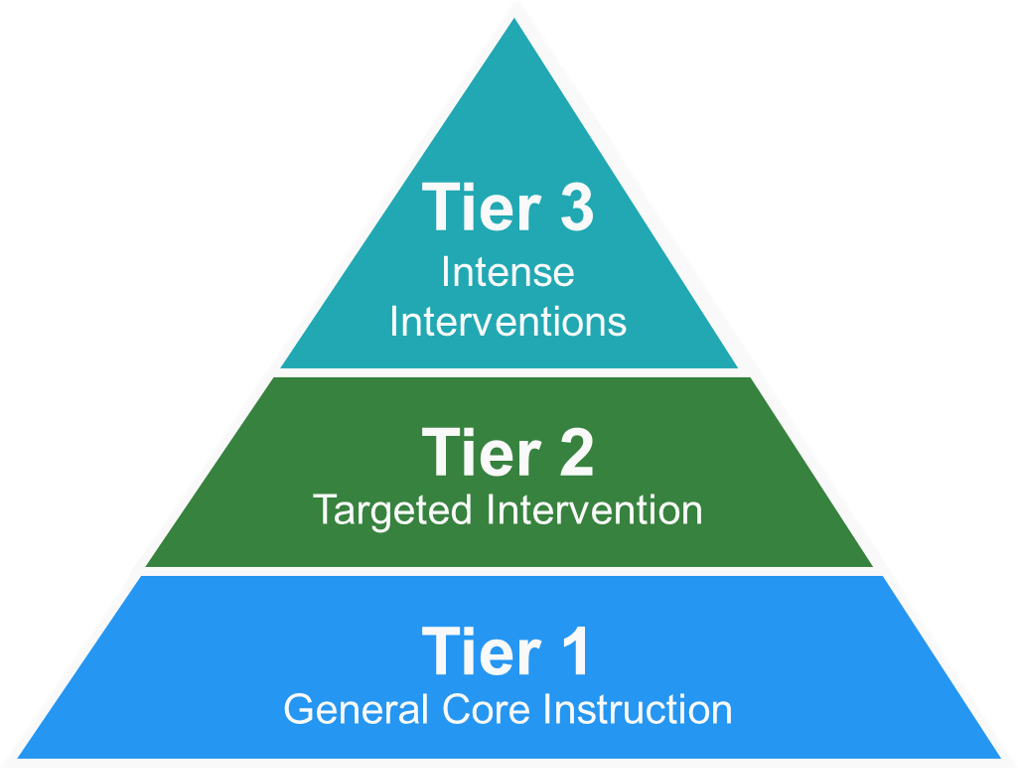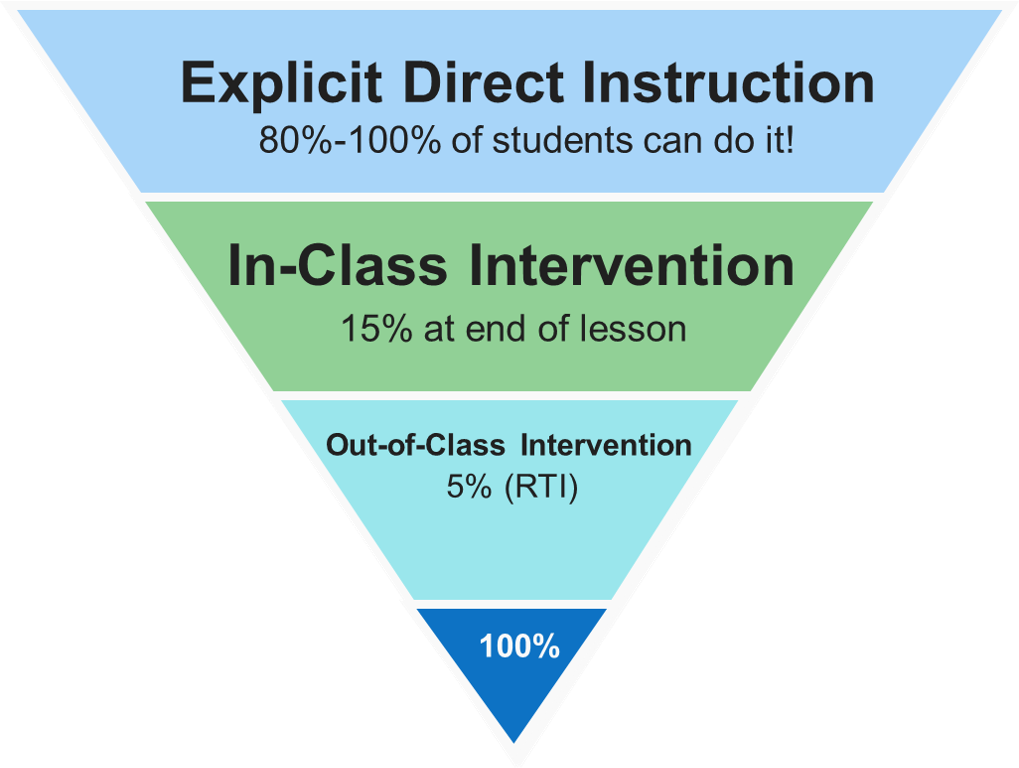Traditionally, Response to Intervention (RTI) is often visualized as a pyramid, with Tier 1 at the base, encompassing the largest group of students, and Tiers 2 and 3 narrowing towards the top, representing progressively smaller groups needing more intensive support. This model can sometimes lead to an over-reliance on remediation, with many students requiring additional interventions.
However, an alternative perspective, as illustrated in the Explicit Direct Instruction (EDI), presents an inverted pyramid. This model emphasizes the power of strong Tier 1 instruction to minimize the need for higher tiers of intervention. By focusing on high-quality, explicit instruction for all students, the goal is to significantly reduce the number of students requiring Tier 2 and 3 support.
The Three Tiers of Instruction

Tier 1: Universal Instruction Tier 1 is the foundation of instruction and is delivered to all students in the general education setting. It includes high-quality, research-based teaching practices that aim to meet the needs of the majority of students. The focus at this level is on prevention and early intervention, ensuring that all learners have access to a solid core curriculum.
Tier 2: Targeted Group Interventions For students who do not respond adequately to Tier 1 instruction, Tier 2 provides additional support. This level involves small group interventions tailored to address specific skill gaps. These interventions are often more focused and intense than Tier 1 instruction, aiming to bring students up to grade-level expectations.
Tier 3: Intensive Individualized Support Tier 3 is the most intensive level of intervention and is designed for students with significant learning difficulties. These interventions are highly individualized and may involve one-on-one instruction to address persistent challenges. Tier 3 often includes collaboration with specialists and may lead to special education services if needed.
The DataWORKS EDI Model: Reversing the Traditional Intervention Pyramid

The DataWORKS Explicit Direct Instruction (EDI) model presents an innovative approach that inverts the traditional intervention pyramid. Instead of accepting that many students will need remediation, this model aims to provide such effective Tier 1 instruction that 80-100% of students master the content during initial teaching. This is achieved through a well-structured approach that includes:
Six Explicit Direct Instruction Strategies for Tier 1 Instruction
Clear Learning Objectives
Begin each lesson by clearly stating learning objectives. Share these with students, ensuring they understand the goals and expectations. The EDI model emphasizes this as the starting point of effective instruction.
Modeling and Demonstration
Demonstrate new concepts or skills step by step. For instance, when teaching a math problem, solve it aloud, explaining each step and why it is necessary. This aligns with the Concept Development phase in the EDI cycle.
Guided Practice
Provide opportunities for students to practice new skills with your support. The EDI model places this as a crucial bridge between instruction and independent application, ensuring students are prepared for success.
Frequent Checks for Understanding
Use formative assessment techniques to gauge student comprehension throughout the lesson. The EDI model identifies this as critical for preventing learning gaps and ensuring no student falls behind.
Scaffolded Instruction
Break complex tasks into manageable steps and provide temporary support to help students succeed. Gradually remove these supports as students gain confidence and proficiency. For example, provide sentence frames.
Opportunities for Independent Practice
Ensure students have time to apply what they’ve learned independently. Design activities that reinforce skills and allow students to demonstrate mastery. The EDI model emphasizes that this practice must align with the learning objective.
Conclusion
The DataWORKS EDI model demonstrates how effective Tier 1 instruction can dramatically reduce the need for interventions. By implementing this structured approach with fidelity, schools can achieve their goal of having 80-100% of students master grade-level work during initial instruction. This inverted pyramid approach represents a shift from remediation to prevention.




